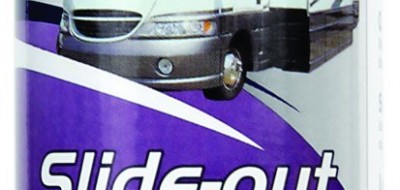When the tank is filled with water, an electrolytic process begins whereby sacrificial anodes are consumed to protect a small amount of exposed steel. Powered anodes replace that process with electricity and are not consumed.Electrolysis simply means that when two metals are physically connected in water, one will corrode away to protect the other. Although few people have heard of this, the principle is used all over the place — anywhere that someone wants to protect metal exposed to water. In marine applications, anodes are known as “zincs” and are usually made of that metal.
All metals fall somewhere on the galvanic scale of reactivity. When two are placed together in water, the “nobler” — or less reactive — one will remain intact while the more reactive one corrodes. When steel and copper are together, steel will be the one that corrodes. Indeed, steel is more likely to rust in the presence of copper than it would have been by itself. That’s why dielectric unions are necessary on items like copper flex lines when they’re connected to steel nipples.
Magnesium and aluminum are less noble than steel, which is why they’re used for anode rods.
Remember, the anode is screwed into the tank. That means it can be unscrewed and replaced.
A sacrificial anode’s life depends on the quality of water, the amount of use the tank gets, the water temperature, and the quality of the tank. When salt is added to the water (as in softened water), anodes corrode more quickly. Water softeners can help reduce sediment, but anodes can corrode in as little as six months if the water is over-softened. Do not soften to zero. Leave 50-120 ppm of hardness.
People occasionally ask us if pipe-seal tape applied to the threads of the anode blocks the electrolytic reaction. Tanks we’ve serviced repeatedly usually have corroded anodes. We’ve tested with a multimeter and found current flowing between the anode and the tank, despite the tape.
While we generally advocate putting two anodes in a tank, that may not be a good idea if you have odor problems.
Why We Don’t Like Aluminum Anodes – Go to http://www.waterheaterrescue.com/pages/WHRpages/English/Longevity/water-heater and select the ANODE link. This link talks about many important water heater tips.
Happy Camping,
Fred b.


Zee
Did you realize that by transitioning from conventional sacrificial anode rods to powered anodes, you can ward off sediment accumulation, reduce corrosion, and sidestep potential high repair costs?
Pingback: scavenger hunt riddles
Pingback: site
barney
It’s simple, really. If your water heater has space for three (usually 3/4″) ‘connections’ on top, i.e. one for hot, one for cold, and one covered by a plastic plug….then the one covered by the plastic plug is for the sacrificial anode rod. Remove the plastic plug, put some elbow grease on the steel plug (and maybe a dab of penetrant on the top of the threads, like WD40) and crack it loose and take a look. If theres a long rod attached to the threaded steel plug, then you’ve got an anode rod. If there isn’t then you don’t…unless of course its completely corroded away, in which case you’ll see the remnant of the anode rod on the underside of the plug in the form of a rusted 1/4″ piece of rod.
Ernie Hadfield
Camping world carries them for Atwood because they can make a buck selling them.
If you really want to know from the experts, call Atwood. That’s what I did several years ago.
Suburban uses a “glass lined” steel tank just like your water heater at home.
Atwood uses an aluminum tank.
Mark Skotek
I have had and do have atwood water heaters in four rv’s that I have owned over the past thirty years and never had any problem with electrolics or any thing else so I never woried about it
James Eiland
Ok, just like dealing with other maintance situation everyone has an opinon. For us novices we need to know the correct answers to these problems. Do we change the rods or not.? Does all heaters have anodes?
Don Pounds
I’m confused. If Atwood doesn’t use anode rods why does Camping World and PPL both sell anode rods specific for Atwood water heaters. And I wonder who makes these rods that Atwood doesn’t use.
Don
Ernie Hadfield
Not only do Atwood heaters not use anodes, but it is my understanding that they will damage the aluminum tank if installed.
George Wharton
It would be nice if you would mention that if you have an Atwood water heater you do not have to replace the anode rods
Atwood heaters do not use anode rods.
Nick Russell
We have replaced our anodes three or four times over the years. When we are in Arizona, the water really seems to be hard on them.
Tony Cornett
I replace mine (or at least check it) every 6 months. some places the water is “worse” than others. It’s amazing the crud that can come out of your tank when you flush it as well while changing the anode rod. It all will extend the life of your water heater tank by a long ways! Great tip and thanks!
Tony
http://firedude.thefiredude.com